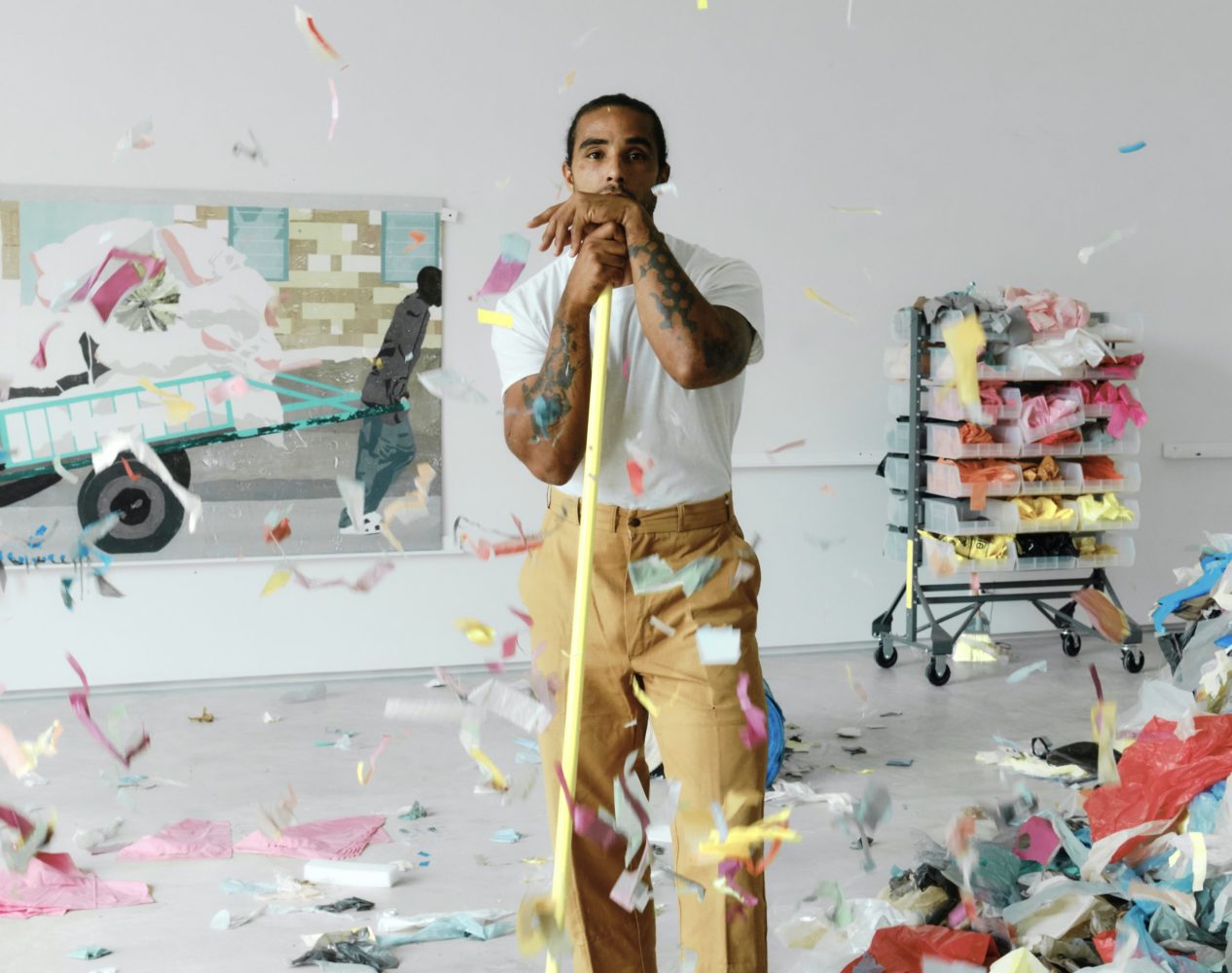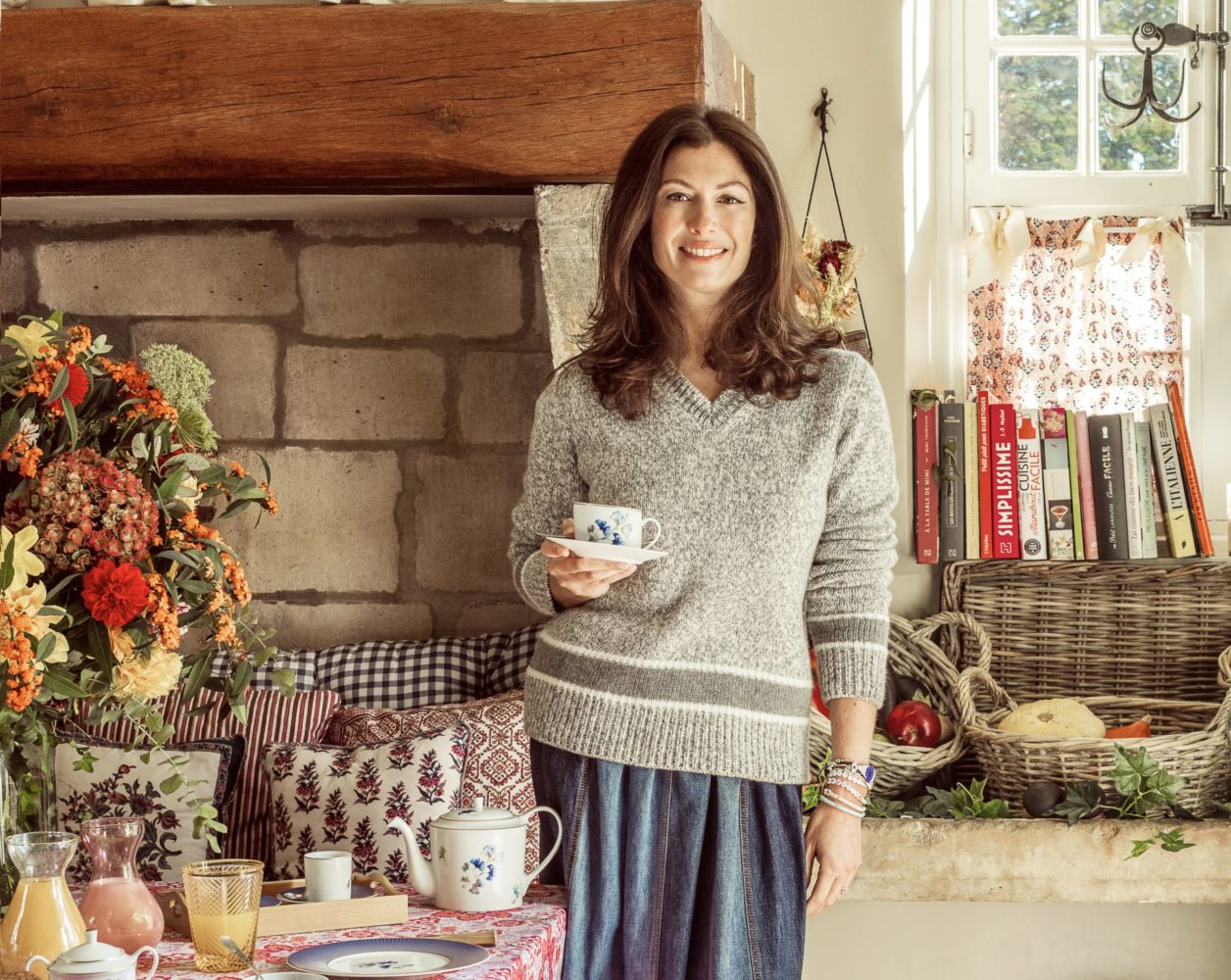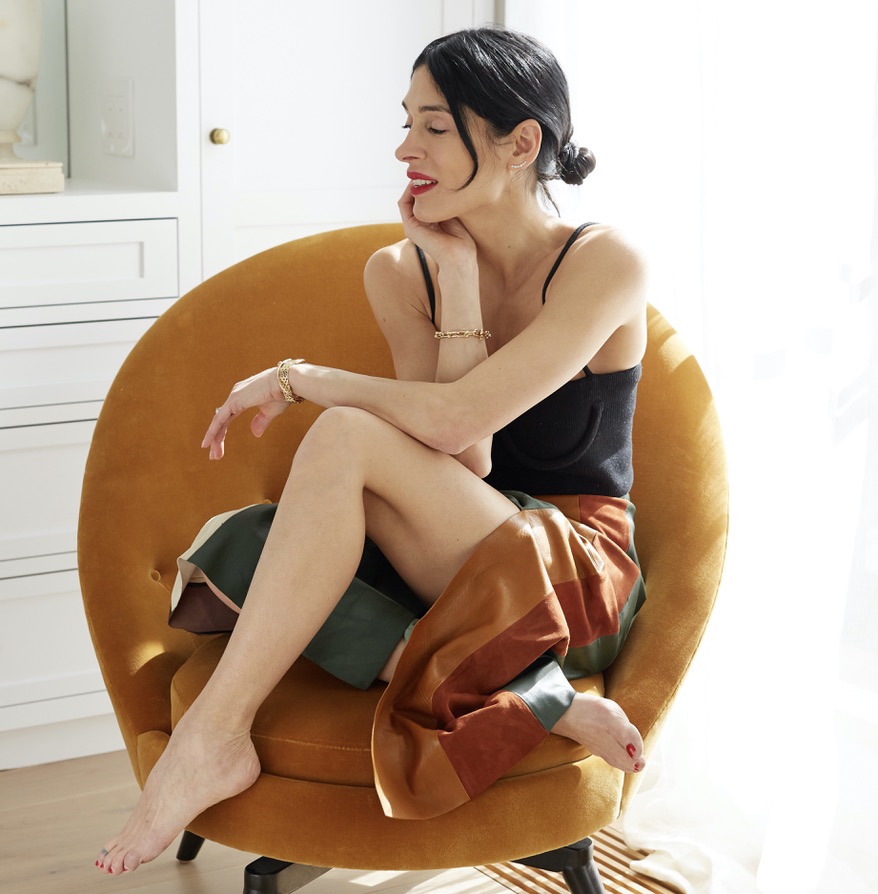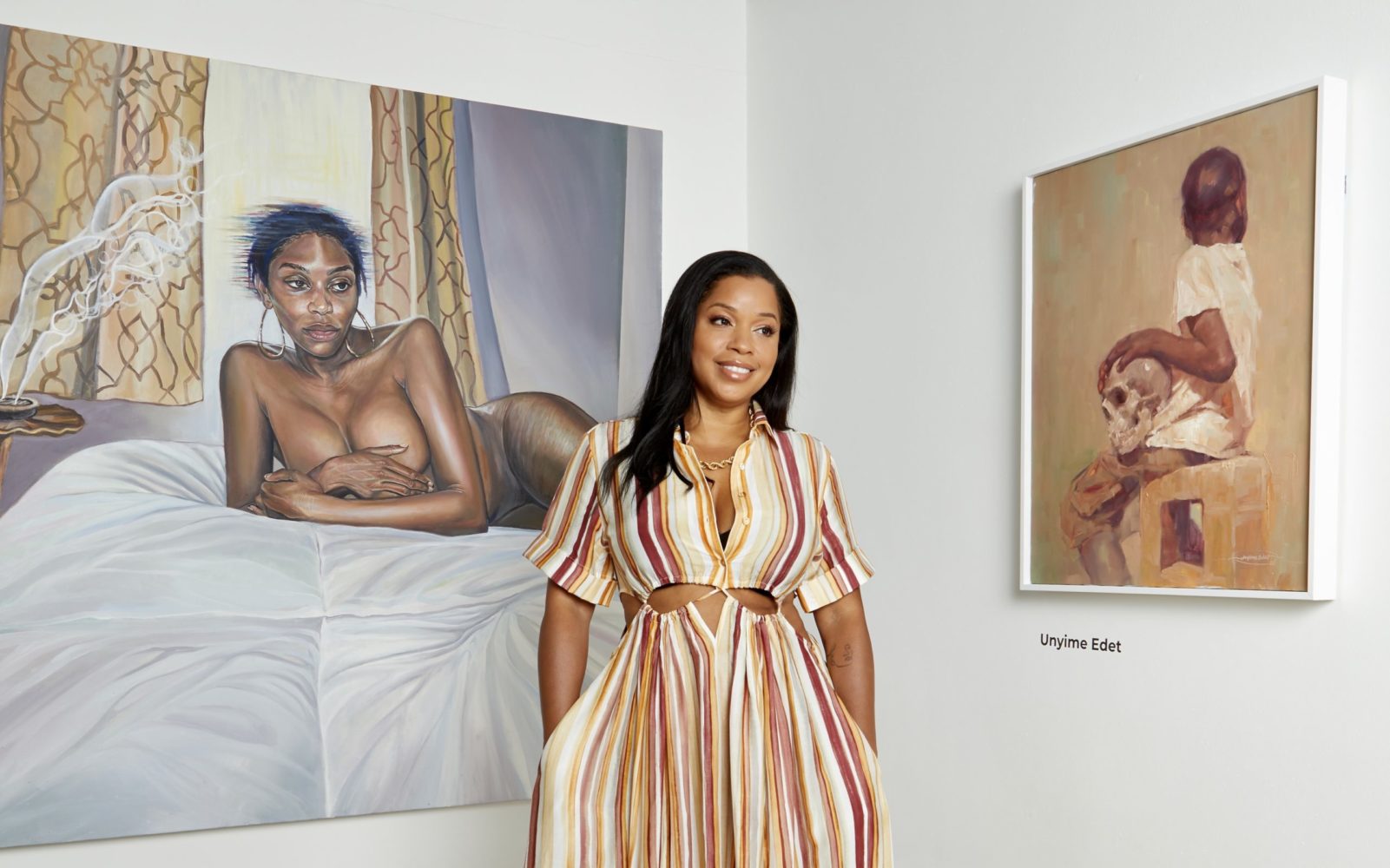Unexpectedly, Hugo McCloud spent all of the past year in Tulum, Mexico. He had built a studio and home there and had planned to be there for just six months to work on his upcoming shows, but then the pandemic hit. The artist readily admits that there are worse places to be, but when we spoke with him this spring, he told us he missed the sound of honking horns so much he found himself watching YouTube videos of city traffic to get his fix.
Paradise problems aside, McCloud’s time in Mexico has resulted in a rich exploration of plastic as a medium. First enamored with polypropylene plastic bags he encountered while traveling in India, the artist set out to make art with them. McCloud is known for his prolific exploration of unconventional materials like tar, aluminum sheeting, and oxidized steel plates. With an industrial design background, he works from a place of instinct and exploration.
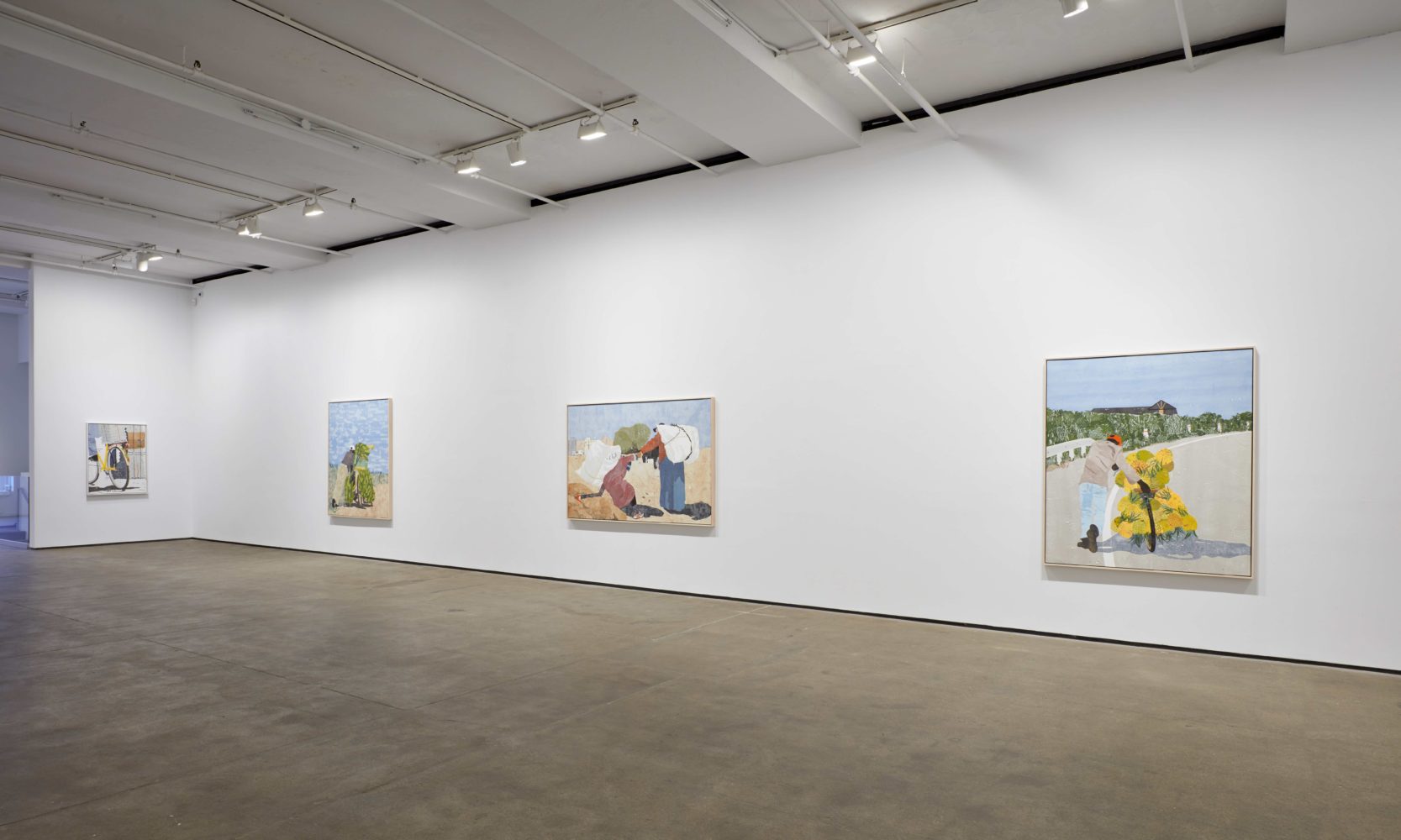
Installation view of “Hugo McCloud: Burdened” at Sean Kelly, New York (January 22–February 27, 2021), photo by Jason Wyche, New York, courtesy of Sean Kelly, New York.
While working from found and gathered plastic bags initially—a commentary on the ubiquity of the items, the economics of labor, the impact of down-cycling, and global consumption and interconnectedness—McCloud happened upon a grocery store in Mexico that sold them in bulk in a peculiar and beautiful array of colors. That new palette, further expanded by searching for the manufacturing sourced, served as the basis for his exhibition “Burdened” at Sean Kelly Gallery early this year. The show featured the artist’s move into figurative works, depicting subjects burdened by survival, whether to make ends meet or risking their lives for a better future. There were images of workers physically carrying or pushing unimaginably large loads of goods as well as plastic paintings of migrants on overcrowded boats referencing the current refugee crisis.
McCloud, who has a survey show at the Aldrich Contemporary Art Museum this summer and an exhibition at Vielmetter in Los Angeles this fall, spoke with Whitewall from his studio in Tulum about continuing to find new ways to problem solve in the studio.
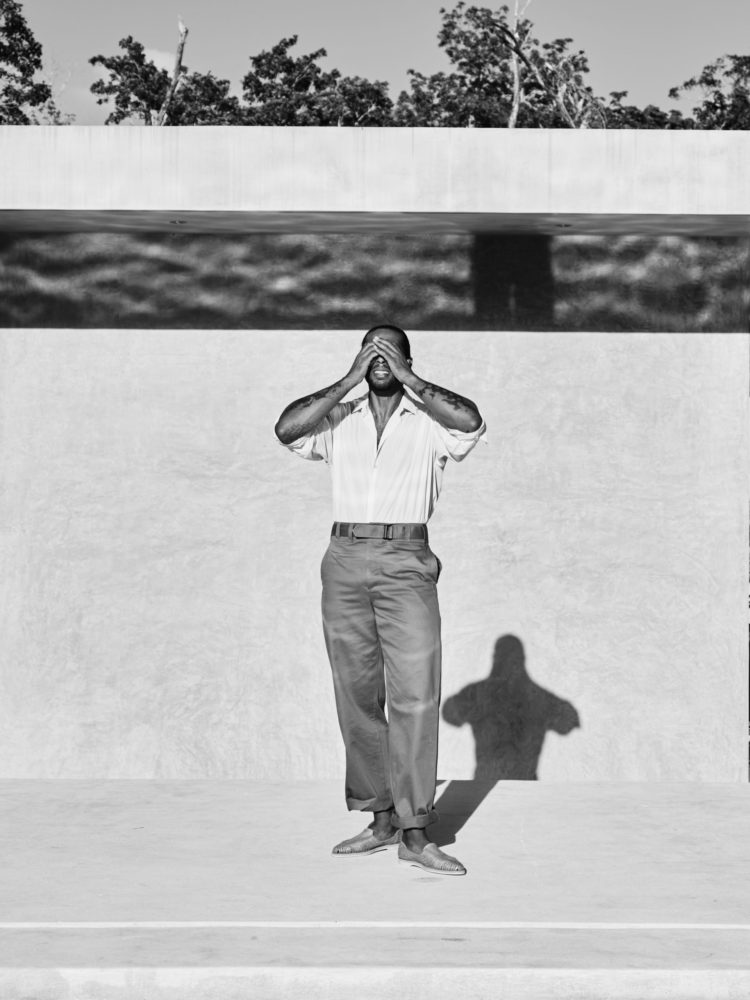
Hugo McCloud in Christophe Lemaire for Lemaire Spring/Summer 2017, French vintage button-down striped shirt, and Brother Vellies shoes, portrait by Enrique Leyva, stylist/creative director Rebekka Fellah.
WHITEWALL: When you came to Tulum last spring, did you have a project in mind?
HUGO MCCLOUD: I started this studio in 2018 and then I finished the house last January. I was here during construction of the studios and was renting a small storefront in the back streets of Tulum that looked over to a vacant piece of land. People came and set up camp there. You would see, every week, slowly this city being built. The put out a folding tables and started selling whatever, and you would see this evolution of markets and stores selling fruit, tacos. During that time I was focused on the plastic work.
From there, that’s when I did the first figure, in that little studio. I was still getting set up here, so I didn’t have all my tools for the stamp paintings or the metal paintings. It takes the least amount of materials and tools to do it.
The reason I built this was to be able to have a studio for the plastic, a studio for the metal work. In New York, if I’m focused on plastic, I had to move the metal work away [because of space]. Now I can have stuff going in different bodies of work at the same time.
WW: Material is such a driving force in your practice, and the process of figuring out how to work with it, how did you start working with plastic bags and what keeps you coming back to it?
HM: The genesis of the plastic started when I was in India and I saw the polypropylene woven sack bags. I first collected those bags from India. I think, “What’s the nature of the material, what’s the possibilities of manipulation of the material, how can I connect it to another material?”
I was thinking about the material, and that thought process dragged me into the plastic bags. I started back in 2014, but I couldn’t figure out the technical aspect of the material, how to make it more secure and fixed. It’s been a continual process from there.
At first, I was interested in the abstraction and figuring out that narrative. But the reality of underlayers and the research of what this work is about was not being brought to the surface. So that’s also one of the reasons I went into figuration. I wanted people to understand what I’m trying to investigate.
There is plastic everywhere in the world. These conversations are everywhere in the world. I thought it would be cool to travel, go to places, connect with people. As I connect with people in different environments, I can collect plastic. And the beautiful thing about collecting plastic from other countries is that everybody uses their own language on the bags and makes their own color identities. The idea was to be able to collect these bags from all these different environments, and when people see them they automatically connect to these paintings and have a relationship to it, so they’ll give it more time. That was the idea before COVID hit, to use plastic as a tool to collect stories.
I had this mental thought of wanting to take everything I’ve seen, that one world wants nothing to do with, and find a way to make it interesting or attractive so then these same people desire it.
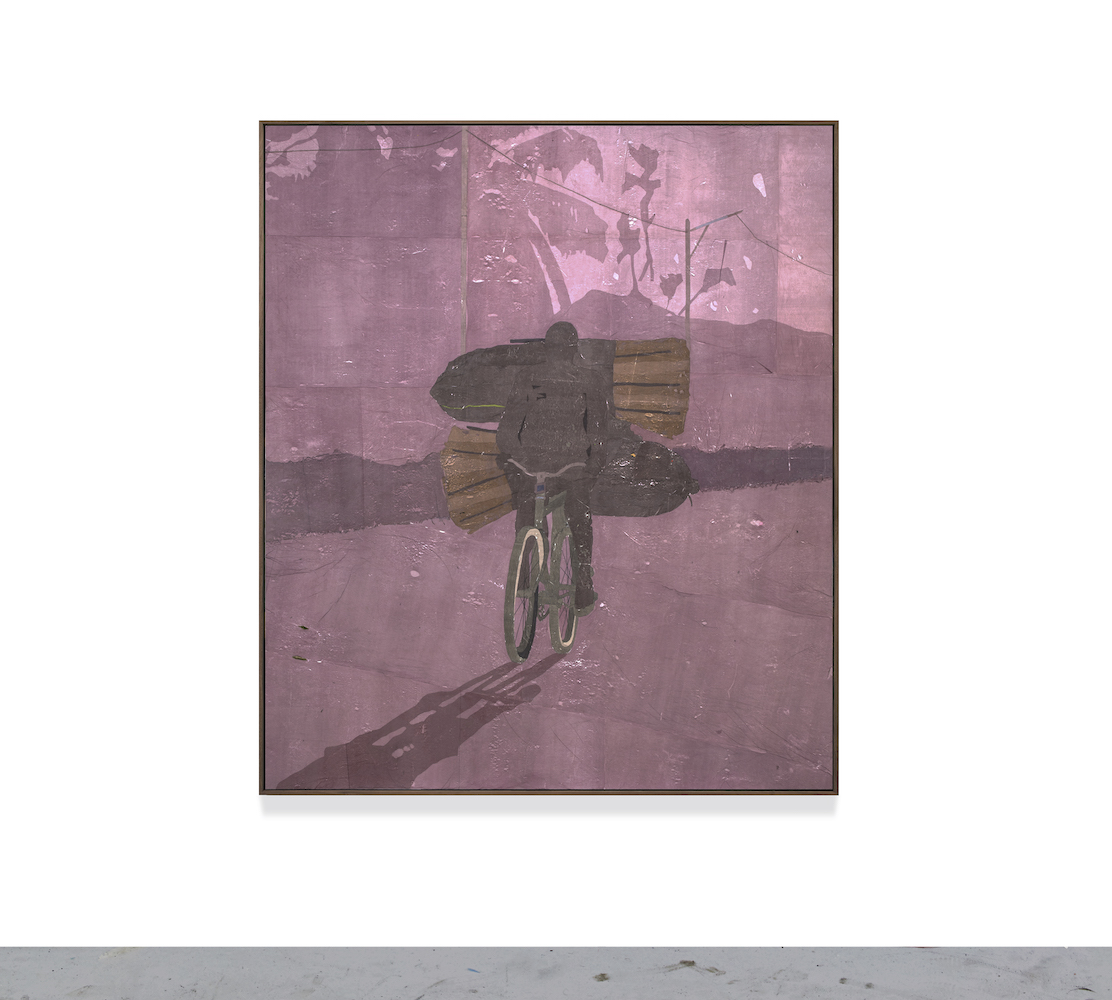
Hugo McCloud, purple haze, 2020, single use plastic mounted on panel, 70 x 60 inches, courtesy of the artist and Sean Kelly, New York.
WW: To make you look, make you see.
HM: Because now they are forced to have a different outlook, which could change something, the way they treat people, how they treat situations. Because of this art, they can look at it in a different way.
WW: And while the images in “Burden” are of real people at work, the struggle of their everyday, they can also serve as a metaphor for the struggles of one’s own life.
HM: And especially in this time. No matter where you’re at in life, economically, socially, location wise. We’re all mentally carrying that heaviness, trying to continually go in a space of hope. To get through the day. Even now, I can’t wait for fall, but we said that last fall, too. You make these mental goals because you’re basically trying not to give up. You’re putting these dates to have a space of hope. In whatever regard—even if this wasn’t going on—life is about problem solving. You’re trying to resolve something at any given time.
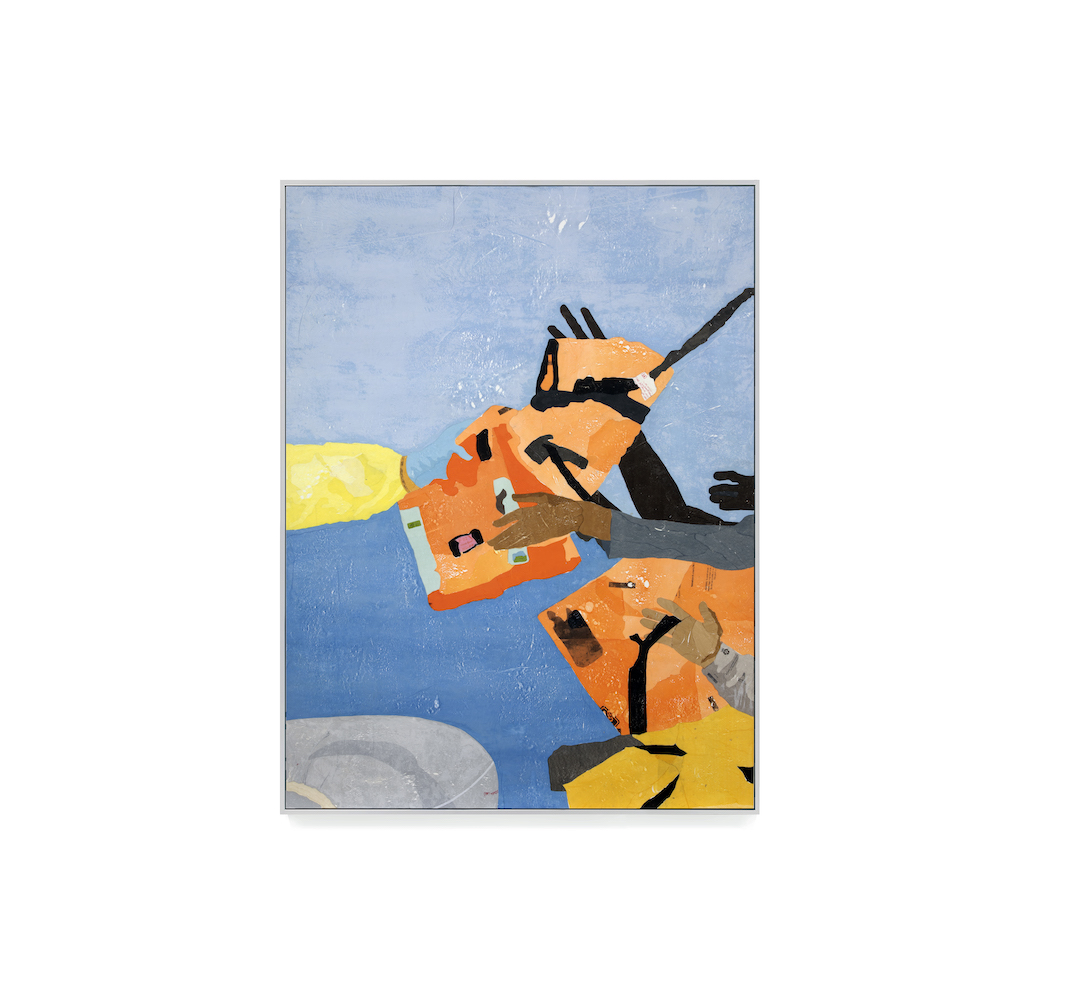
Hugo McCloud, “reach,” 2020, single use plastic mounted on panel painting: 48 x 36 inches, framed: 49 1/2 x 37 1/4 x 2 1/8 inches; © Hugo McCloud, courtesy of Sean Kelly, New York.
WW: You’ve talked about how the spectrum of color has opened up for you from being in Mexico, both your environment and in material. How so?
HM: I was collecting plastic from the streets at the beginning, making small pieces. Then once I started doing larger pieces and especially figuration, I needed more. I understand the problems with it, and I’m using plastic as a tool to tell stories the same as I would use paint.
When I came to Mexico, I went to the stores here, and the bags are the most beautiful offset tones. They are like Pantone. At one store, every week there would be different colors. I thought, “They’re not going off of systematic color making. There is somebody in there throwing colors in like an artist.”
It made me look up this company, and we contacted them, told them what we did. They were hesitant at first because like, “You’re an artist who paints with plastic and buys all your bags from Super Aki? What is this e-mail?”
I’m trying to advance the practice of whatever work I’m doing. So we went up and made a first batch of these one-yard rolls of custom colors. I made 12 of those and I’m going to make a bunch more.
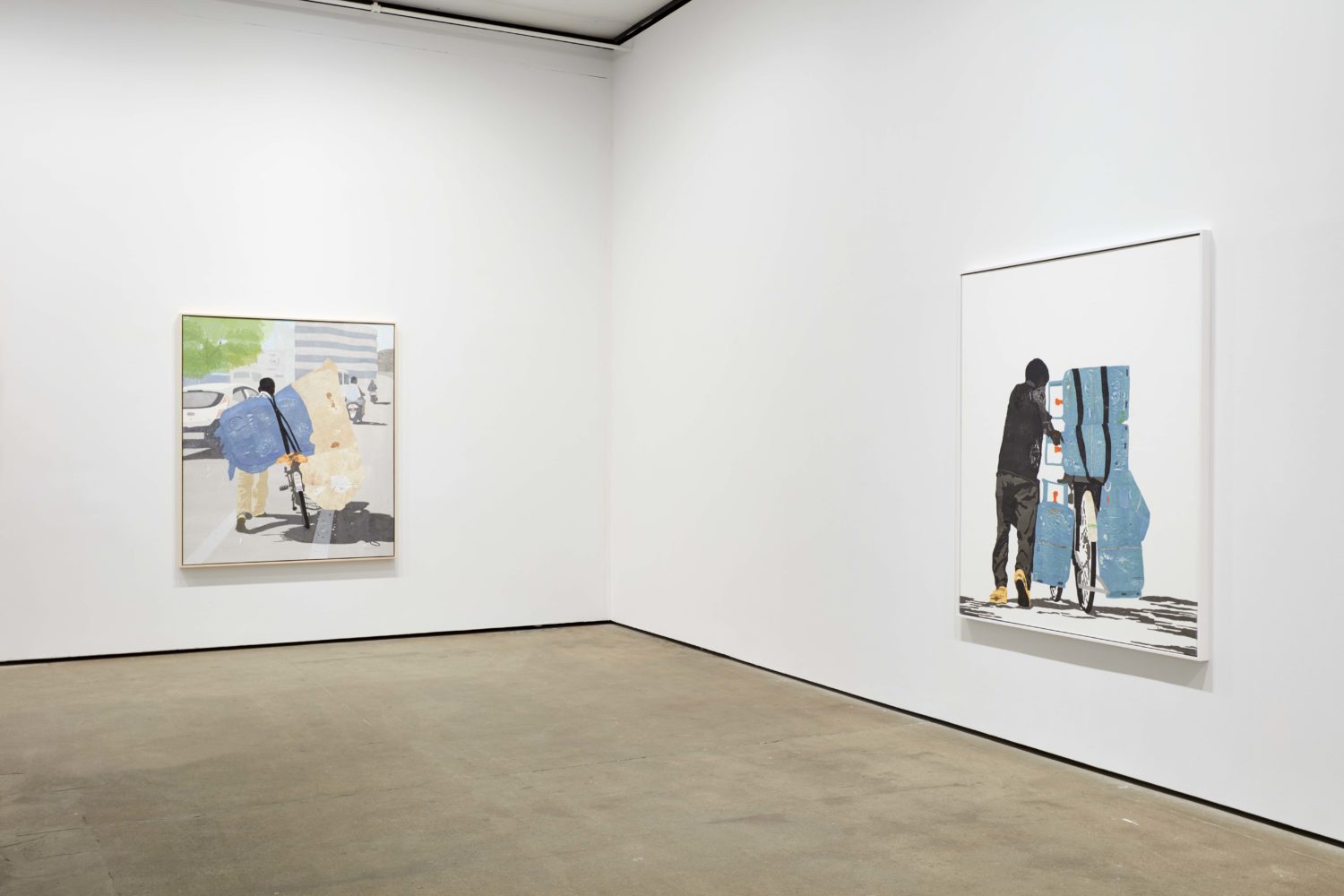
Installation view of “Hugo McCloud: Burdened” at Sean Kelly, New York (January 22–February 27, 2021), photo by Jason Wyche, New York, courtesy of Sean Kelly, New York.
WW: Has introducing figures into the plastic works changed what you’ll do with the next stamp or metal works?
HM: I like these breaks from materials. I haven’t done stamp paintings in a while, but I’m continually thinking about them. If I make a new stamp painting, how would I want to do it? I really want to do the stamp paintings again because being here in Mexico the visuals of color are on a totally different level.
I’m also thinking about the metal. I’ve finally sourced the metal sheets, but the difference between here and the U.S. is the sheets are the same length but half the width. Before I have access to start doing it, I know the sheets are much narrower. How do I make that play? The new environment comes with its own constraints.
I also think it’s interesting, being in a different country, to start using sources from here. Same when I was in the Philippines. That’s the idea of what I’m trying to evolve with the different materials. I built this place to be able to have these different practices going.
I’m building out a ceramics studio to start exploring that. Whether it’s stuff I show at all, it’s about the idea of continually being in the unknown space of creating. That excites me and gives me enthusiasm to be in the studio and brings ideas in.
WW: You need a challenge in it.
HM: I need a “How do I do it?”
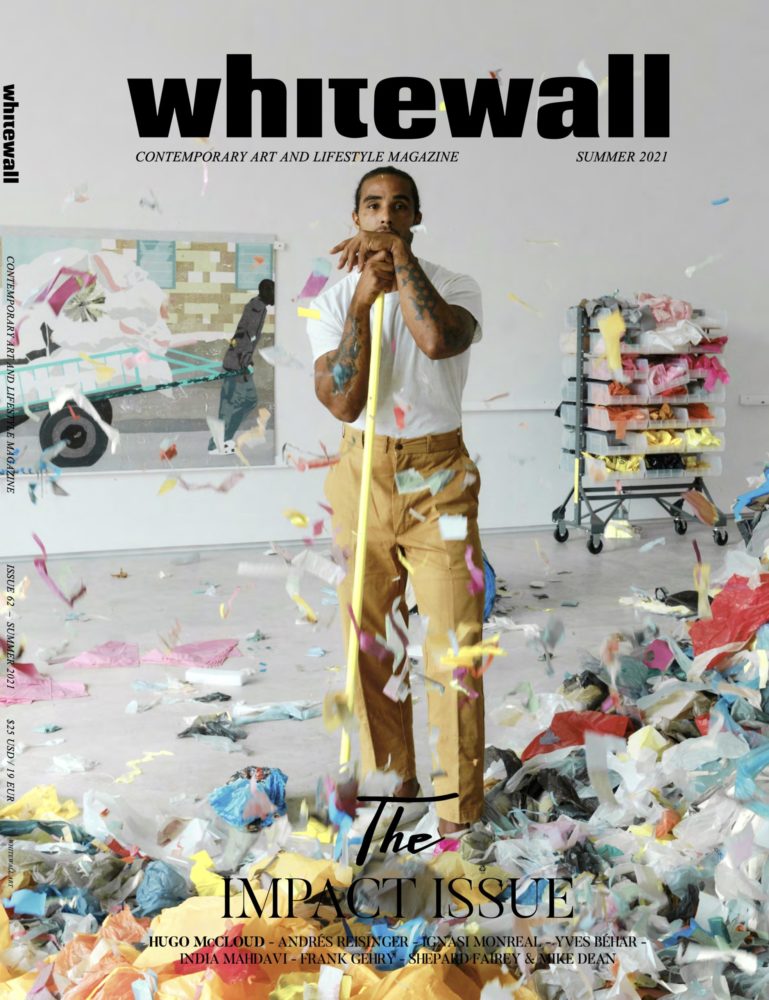
Portrait of Hugo McCloud by Enrique Leyva.



